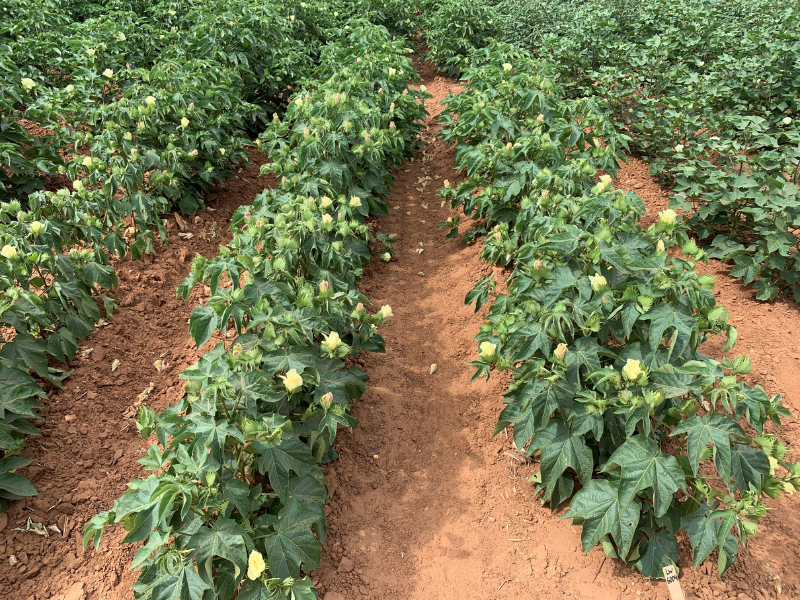USA
October 5, 2022

The typical American Pima cotton is a variety of cotton grown in the United States. In this study, the research teams developed new Pima cotton germplasm lines resistant to the Fusarium wilt race 4 disease by crossing varieties from Uzbekistan and the USDA’s cotton germplasm collections. Credit: Mauricio Ulloa
Cotton is an important crop grown around the world, such as in countries like the United States and Uzbekistan. When a fungus began to harm cotton in both countries, it brought together their scientists for an innovative research collaboration.
The fungus is called Fusarium wilt race 4 and it has impacted Pima cotton production, a specific kind of cotton, in parts of California for nearly two decades. More recently, this same wilt was found in Texas in 2017 and in New Mexico in 2019. Fusarium has also impacted farming regions in Uzbekistan. The fungus causes the plants to wilt and die.
To find a way to help cotton farmers, the United States Department of Agriculture (USDA), Uzbek scientists, some U.S. universities, and others in the cotton industry teamed up. This provided an opportunity to aggressively address the Fusarium wilt problem and protect the cotton industry in both countries. The scientists worked together to find a solution to reduce the vulnerability of the cotton crop to the fungus.
“These groups strengthened collaborations with a common goal: to quickly identify resistant sources to the disease so they can be intercrossed to develop improved varieties of Pima cotton,” says Mauricio Ulloa, a research geneticist with the USDA’s Agricultural Research Service. “I’m happy to say that these efforts paid off.”
The study was recently published in the Journal of Plant Registrations, a publication of the Crop Science Society of America.
The research teams developed new Pima cotton germplasm lines resistant to the disease by crossing varieties from Uzbekistan and the USDA’s cotton germplasm collections. Germplasm is often referred to as a living genetic resource that assists breeders in advancing the diversity of a crop. For crops, they commonly come in the form of seeds or plant tissue.
The three new lines — which go by PSSJ-FRP01, PSSJ-FRP02, and PSSJ-FRP03 — are the product of lines that have been found to be resistant to the disease. They each have slightly different characteristics. Each proved to have a good balance of resistance to the fungus and good fiber quality.
“These lines will help continue reducing the vulnerability of the Pima cotton industry to this fungal pathogen,” Ulloa says. “It will also keep advancing efforts to broaden the genetic base of the resistance. This is critical to the cotton industry in the U.S. and Uzbekistan. It has been rewarding to be a part of this research and breeding effort. The development of a resistant germplasm will help reduce the impact of this pathogen on the cotton crop.”
Fusarium wilt race 4 causes a cotton plant to die during the growing season. The fungus first infects the roots, which causes a long, dark continuous stripe to appear in the tap root. When the roots begin to die, it causes withering in the leaves as well.
Cotton that is resistant to wilting has a plant mortality rate lower than 10% and very low occurrence of root staining. It can still produce a good yield without the leaves being impacted. Although scientists are still working to better understand this disease and do not know exactly how, the plants seem to not allow the fungus to colonize the roots to as much as non-resistant plants.
The researchers’ goal in generating these new lines is that private breeders have new genetic resources they can use to produce commercial varieties that are resistant. This will allow farmers to protect their crops from the fungus.
“Even though germplasm lines are not a fully finished variety, they provide a tremendous resource,” Ulloa explains. “We can use the resistant germplasm lines we’ve obtained and intercross them with seed company’s varieties. This eventually reduces the economic loss of cotton production for growers and allows them to use new and improved resistant varieties.”
Funding for this research was provided by the United States Department of Agriculture.